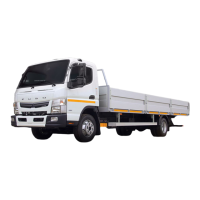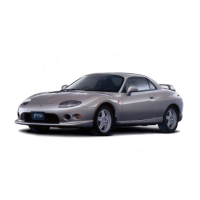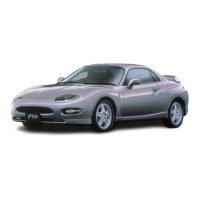13-27
2. Attach the other end of the rope or wire rope to
the towing hook of the stranded vehicle. If nec-
essary, use another towing hook that is located
behind the left-hand side rail.
3. For the sake of safety, the angle formed by the
tow rope when hooked up should be limited to
the range indicated in the illustration. Do not tow
a vehicle under conditions which could impose
sudden undue stress on the hooks (for instance,
towing a vehicle out of a ditch) as doing so could
break the hooks.
4. Start each vehicle’s engine and prepare to start
driving.
5. If the rope or wire rope is slack, eliminate the
slackness by moving the towing vehicle.
6. Slowly drive both vehicles forward. Do not race
either vehicle’s engine.
7. When the towed vehicle becomes free, promptly
stop it each vehicle by applying the brake pedal.
To make the rope or wire rope easy to remove
from the towing hooks, let it become slightly
slack before stopping the towed vehicle.
WARNING
To avoid the risk of a serious accident, make
sure the rope or wire rope is strong enough
to tow the stranded vehicle and make sure it
does not slip off either vehicle’s towing hook.
Z12524
Towing hook
Z11290
15°
15°
15°
15°
FEFG.book Page 27 Thursday, March 10, 2005 7:30 PM

